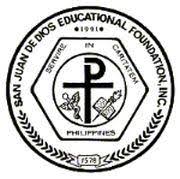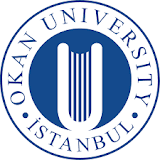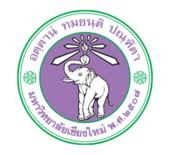Day 1 :
Keynote Forum
Rodolfo C. Borromeo
Director of Nursing Service Division of San Juan de Dios Educational Foundation, Inc. – Hospital
Keynote: EVOLVING NURSING LEADERSHIP EDGE IN THE 21ST CENTURY: CHALLENGING ALL BORDERS

Biography:
Rodolfo C. Borromeo has completed his Doctoral degree, major in Educational Management at the Philippine Women’s University. He is currently the Director of Nursing Service Division of San Juan de Dios Educational Foundation, Inc. – Hospital since 2005. He is also the Vice President of the Association of Nursing Service Administrators of the Philippines (ANSAP) and is a member of the Ethics Committee and Chairman of the Research Committee of the same organization.
Abstract:
The predominantly high expectations in the 21st century across all sectors, and professions in various industries, posted challenges that influence everyone to evolve and make adjustments to adapt. In the healthcare industry alone, we have engraved the standards of practice to elevate quality and safety to respond to one of the priorities of the World Health Organization in their strategic development goals, “to ensure healthy lives and promote well being for all at all ages and call for achieving universal health coverage”. Keeping track to the future means, advancing health technologies that raise care modalities to the next level. This can be attested by Rick (2014), who viewed the 21stcentury as value-driven healthcare system believed to require keen insight and attention to quality, safety, cost, and the patient’s experience.
Realizing complexities of technology, preservation of compassionate care, research, and the preparation of nurses to the 21st century nursing skills are just some of the leadership bold tests, which would ensure seamless execution. The Five Essential Skills for Leadership in the 21st Century shared by Greenberg, and Enhancing your Executive Edge by Koller and Preston are some of the models for leaders to consider, which could blend the demands of the future without compromising the beauty of the past.
Most leaders are gearing towards technology, but contemplating over predictions and anticipations of experts, still collaboration and great deal of relational leadership remains to be on top of the list.
- Nursing Education & Management
Session Introduction
Rodolfo C. Borromeo
Philippine Women’s University, Philippines
Title: Reflective and Interactive Coaching Huddles (RICH) in Building Engaging Workplace

Biography:
Rodolfo C. Borromeo has completed his Doctoral degree, major in Educational Management at the Philippine Women’s University. He is currently the Director of Nursing Service Division of San Juan de Dios Educational Foundation, Inc. – Hospital since 2005. He is also the Vice President of the Association of Nursing Service Administrators of the Philippines (ANSAP) and is a member of the Ethics Committee and Chairman of the Research Committee of the same organization.
Abstract:
One of the values of the hospital that relates to work engagement is Co-responsibility, which was found to be a challenging behavior. Nevertheless, it devotes its context towards developing individual’s capability to engage in the organizational activities. The study determined the impact of the Reflective and Interactive Coaching Huddle (RICH) in building workplace engagement among nursing service employees of San Juan de Dios Educational Foundation Inc. - Hospital. The purpose of this study was to determine the significant variations on the achievement work engagement metrics of the nurses under study after the implementation of the said coaching guidelines. This study employed a descriptive, evaluative research design, of which 183 staff nurses, charge nurses and nurse managers have participated. Findings reveal that the participants were predominantly female, aged 21 to 25 years old. The extent of workplace engagement was evidently observed by nurses and rated from high to very high extent of achievement. There were significant variations on the extent of achievement to workplace engagement based on positions, age, and interdisciplinary communication. It was then recommended to continue the use of the Reflective and Interactive Coaching Huddle to among nurses, blended understanding of both staff nurses and nurse managers, decreasing generational gaps through training modules capitalizing on reflecting generational limitations and devising a recognition criterion to acknowledge the most engaged team among nursing units and positions.
Ma Ave Lorraine P Llorin
San Juan de Dios Educational Foundation, Philippines
Title: ENN-RICH: Engaging novice nurses through reflecting and interactive coaching huddle
Time : 14:30-15:10

Biography:
Ma Ave Lorraine P Llorin has completed her Graduation from University of Santo Tomas with a Bachelor’s degree in Nursing and is currently pursuing her Master’s degree in Nursing, major in Nursing Service Administration at Concordia College. She is currently the Assistant Training Coordinator of San Juan de Dios Educational Foundation, Inc. – Hospital.
Abstract:
Adopting a nurturing culture of coaching that promotes nurses’ growth, development and confidence is necessary. Coaching using reflecting and interactive coaching huddle (RICH) is implemented in the nursing Service of SJDEFI – Hospital to support the learning and development of nurses. Coaching is being conducted as a corrective action instead of preventive. Thus, this study aims for novice nurses to evaluate RICH as a preventive coaching strategy used by unit preceptors in helping novice nurses develop their fullest potential as competent nurses and effective leaders of their units. This quantitative study focuses on the relationship between the demographic profile of the novice nurses and the effectiveness of RICH. The study was conducted in various areas of the five sections of the Nursing Service of SJDEFI – Hospital. The identified novice nurses were the 41 participants who underwent coaching sessions every after shift with their unit preceptors. 53.66% of the novice nurses came from the 20-24 age group. The population of novice nurses was predominantly female with 85.37%. Only 4.88% of the novice nurses attained a master’s degree in Nursing. Novice nurses were mostly assigned in special areas of the institution. 41.46% of the novice nurses have less than six months of experience in the institution. Evaluation of novice nurses on RICH as an effective strategy in improving their job performance in terms of: Dynamic involvement, Interdisciplinary communication, individual task expectations and acquired leadership roles attained very high extent ratings. The only relationship that was significant was between age and individual task expectations.
- Pediatric Nursing
Session Introduction
Gulzade Uysal
Okan University, Turkey
Title: DETEMINE OF FREQUENCY AND REASONS OF VACCINE REJECTION OF PARENTS OF 0-24 MONTHS CHILDREN
Time : 11:30-12:00

Biography:
Gulzade Uysal currently works at the Faculty of Health Sciences, Okan University. Gulzade does research in Pediatrics, Nursing Science and Addiction Medicine.
Abstract:
The aim of the research was to prospectively evaluate the frequency and reasons of vaccine rejection 0-24 months old children’s parents. The data of the study were determined by simple randomization and were obtained from two Family Health Centers in Istanbul between March 1st and October 31th 2017. The study's universe consists of 3942 parents who applied for two health centers within that period, and the sample was 470 parents who were willing to participate in the study. In the research, the questionnaire was applied face to face with the parents. Data were transferred to SPSS 21.0 program and analyzed with appropriate statistical tests.
When investigating parents' infant/child immunization status; 80.4% of them had their babies/children vaccinated, and 11.9% didn’t have some vaccinations. It was determined that 7.7% (n=36) of the parents refused to have the vaccine. It was found that 79.1% of the parents have the vaccine because they believed that the vaccines were necessary and 46.7% of the rejected group refused because they thought that the substances were harmful. The difference between the vaccination status of parents and the descriptive characteristics of the baby/child was statistically insignificant (p>0.05). When the vaccinated cases were compared with the whole interviewed parents, the difference between the groups was found to be significant (p<0.05). The difference between the parents' perception of the side effects of vaccinations and the descriptive characteristics of the baby/child was statistically insignificant (p>0.05). When the parents, education status and parents' perception about the side effects of vaccinations were compared, it was determined that the difference between the groups was meaningful (p<0,05). The difference between the parents' intentions to obtain information about the vaccination and the descriptive characteristics of baby/child was statistically insignificant (p>0.05). When the age of the baby/child, the parents and the socioeconomic status and the parent’s desire of getting information about the vaccination were compared, it was determined that the difference between the groups was significant (p<0,05).
As a result, it has been determined that the majority of parents have their children completed their vaccinations, and those who completed their vaccination have concerns about the content of vaccinations and also have concerns about whether or not to vaccinate.
- Clinical Nursing
Session Introduction
Chutima Meechamnan
Chiang Mai University, Thailand
Title: Progressive Muscle Relaxation on Life-Altering Symptoms in Persons with Hepatocellular Carcinoma Undergoing Transarterial Chemoembolization Therapy.
Time : 12:00-12:30

Biography:
Chutima had worked as a registered nurse in surgical unit for few years after graduation then continued to study master degree in adult nursing and completed her PhD from Faculty of Nursing, Chiang Mai University. Now, I am an instructor at Faculty of Nursing, Chiang Mai University and teach in the surgical unit.
Abstract:
In Thailand, hepatocellular carcinoma (HCC) ranks as number one cancer in men and fourth in women. It is also the major cause of death in men and ranks second in women. Transarterial Chemoembolization (TACE) is the recommended treatment for HCC patients, resulting in delayed tumor progression and prolonged survival. However, TACE leads to several life-altering symptoms including pain, fever, and nausea and/or vomiting. Current knowledge on integrative therapies demonstrates that some techniques such as the progressive muscle relaxation might assist with pain management. The study used a one-group pre- and post- test design. Participants were 30 HCC patients who underwent first TACE attending a university hospital in Thailand. They received PMR training and provided a PMR CD for home practice. They were educated to use PMR as needed for symptom management for six weeks at home, kept a log of symptom rating book each time PMR was used, recorded the time of day and made immediate pre- and –post treatment recording of the symptoms severity on a 0-10 scale. The two most life-altering symptoms after TACE were pain, which can be classified as upper back pain, and lower back pain. The changes in symptom ratings from pre- to post- PMR were significant. Mean upper back pain scores decreased from 4.33 (SD = 0.45) pre-treatment to 2.73 (SD = 0.33) post-treatment (Z=-3.92, p<0.001), and mean lower back pain scores decreased from 4.71 (SD = 0.82) pre-treatment to 3.80 (SD = 0.60) post-treatment (Z=-3.70, p<0.001).
Pingqiao Yuan
Sichuan University, China
Title: Influencing factors of ability of rapid identification of stroke among nursing staff
Time : 14:00-14:30

Biography:
Pingqiao Yuan has completed her Undergraduate degree from Lanzhou University, China. Currently she is pursuing her Graduation from Sichuan University majoring in Nursing.
Abstract:
Objective: To investigate the knowledge of stroke warning signs among nursing staff and analyze the influencing factors, and to providing the basis for improving the ability of rapid identification of stroke among nursing staff.
Methods: Investigating the general information and knowledge of stroke of among nurses, And according to the nurses’ knowledge of the number of clinical symptoms of sudden stroke, they were divided into two groups: The group with rapid identification ability and the group without ability and the univariate analysis was used to analyze the influencing factors.
Results: Influencing factors include whether the nurses had been exposed to stroke patients, whether the nurses had studied the knowledge of stroke, whether the nurses had participated in stroke-related training, work location of the nurses, nurses’ assessment of the importance of rapid identification of stroke and nurses’ confidence of rapid identification of stroke. The nurses' education background, professional qualifications, work-hospital levels are not associated with the nurses’ ability of rapid identification of stroke.
Conclusion: Nurses lack of the knowledge of rapid identification of stroke, nurses should be intervened aimed at the influence factors to enhance the ability of stroke rapid identification and improve the rate of early detection of in-hospital stroke.
Shuqi Huang
Sichuan University, China
Title: Multifactor analysis of falls in patient with Parkinson’s disease
Time : 13:30-14:00

Biography:
Shuqi Huang is currently pursuing graduation in Nursing at West China Hospital of Sichuan University, China.
Abstract:
Objective: To study the risk factors of falls in patients with Parkinson’s Disease (PD) and give adequate advice to prevent fall in PD patients.
Methods: 197 patients with PD from outpatient clinic of neurology were recruited. The demographic, clinical data were collected. Assessments of physical, psychiatric, cognitive status and falls were conducted during interview. Multivariate logistic regressions were performed to analyze the risk factors of falls in patients with PD.
Results: 110 (55.3%) patients had at least one fall in the past year. Logistic regression showed dyskinesias (OR=2.415, CI 1.013-5.757 95%, P=0.047), orthostatic hypotension (OR=3.890, CI 1.136-13.318 95%, P=0.031), H-Y rating (OR=6.174, CI 2.803-13.600 95%, P=0), MOCA score (OR=6.894, CI 1.826-26.030 95%, P=0.004), HAMD score (OR=1.144, CI 1.044-1.253 95%, P=0.031), HAMA score (OR=0.920, CI 0.852-0.995 95%, P=0.036) were independent risk factors of falls in patients with PD.
Conclusion: Falling is a common problem in Chinese PD patients. PD patients with dyskinesias, orthostatic hypotension, high H-Y scores and high score of MOCA, HAMD and HAMA will increase the risk of falling. Indicating the condition of the disease, the clinical symptoms, the cognition and the mental condition are important in the assessment and prevention of falls in PD.
- Gerontology Nurse
Session Introduction
Salma Al Yazeed
Arizona State University, Arizona, USA
Title: Meeting Spiritual Needs: An Essential Aspect of Caring for Senior Adults at End of Life
Time : 15:10-15:40

Biography:
Salma Al Yazeedi is a PhD candiadate at Arizona State University. She is a nurse tutor at Ibra Nursing College, Sultante of Oman.
Abstract:
Recently, there has been a great focus on spirituality and spiritual care. However, the potential impact on terminally ill elderly at end of life and palliative care remains unaddressed. The purpose of this systematic review is to synthesize publications that addressed the effect of spirituality and spiritual care, particularly at palliative care and end of life. It also highlights the role of palliative health care providers and reviews measures that enable them to effectively address the spiritual needs of critically ill elderly. Research was conducted through Pubmed and PsychINFO databases. The search was specified for the period between 2005 and 2016, using the key terms “spiritual care,” “spirituality,” “elderly,” “senior adults,” “palliative care,” and “end of life.” The inclusion criteria for studies selection were applied included: a) articles published in English language, b) studies' participants aged 50 years and more, and c) articles should be relevant to the addressed concepts. A total of 64 articles were retrieved from the two databases and18 duplicated articles were eliminated. Titles and abstracts of 46 publications were reviewed, and 22 were eliminated for irrelevancy. The remaining 24 articles were reviewed comprehensively and eight were excluded. 16 articles were retained for final review, which found to be relevant to the inclusion criteria. The findings from this systematic review prove that spirituality positively enhances the well-being of senior adults, supports them to cope with the catastrophes, and adjusts well in their lives. Palliative health care providers obviously play an essential role in meeting the spiritual needs of critically ill elderly. Addressing practical strategies to increase their awareness, knowledge, and skills regarding spirituality will effectively enhance delivery of efficient spiritual care.






